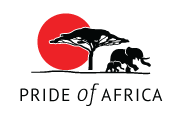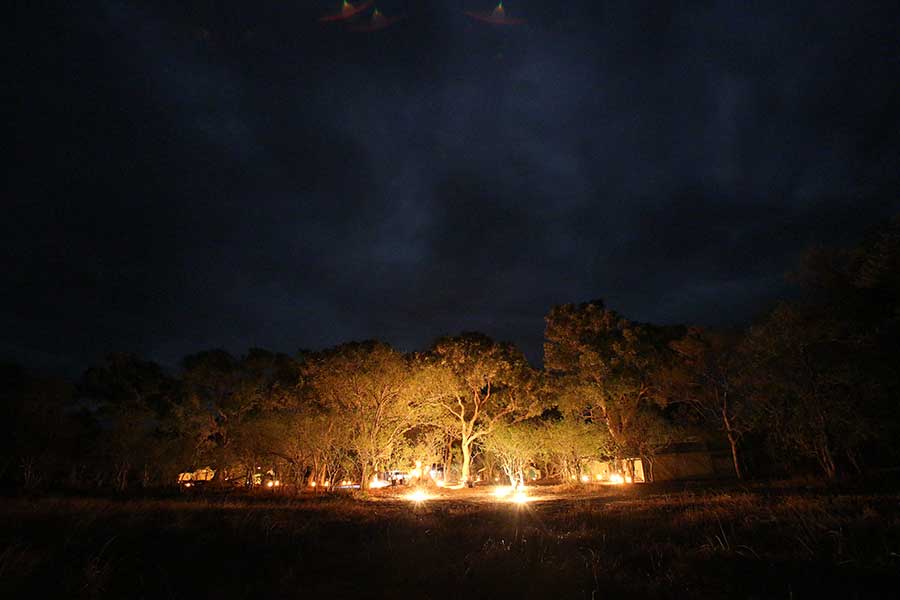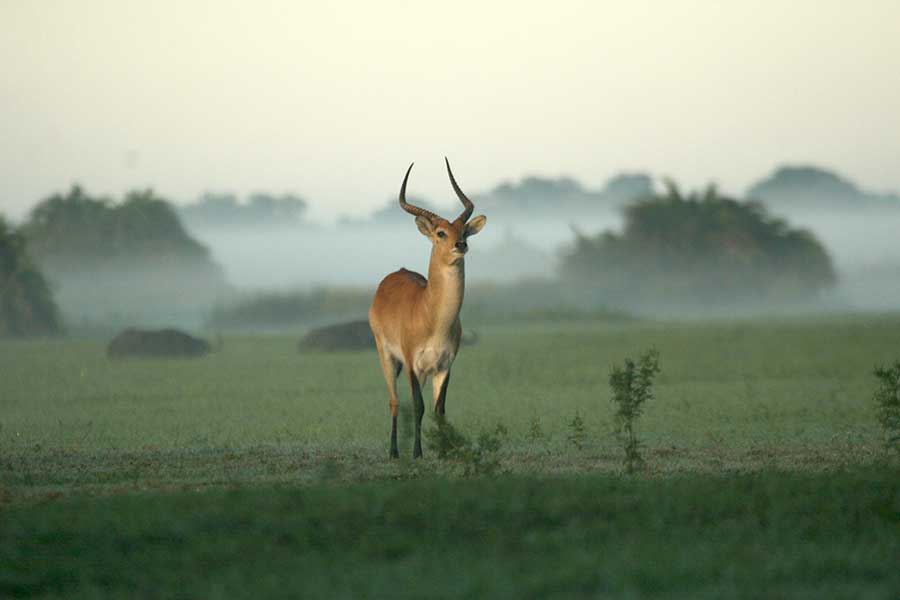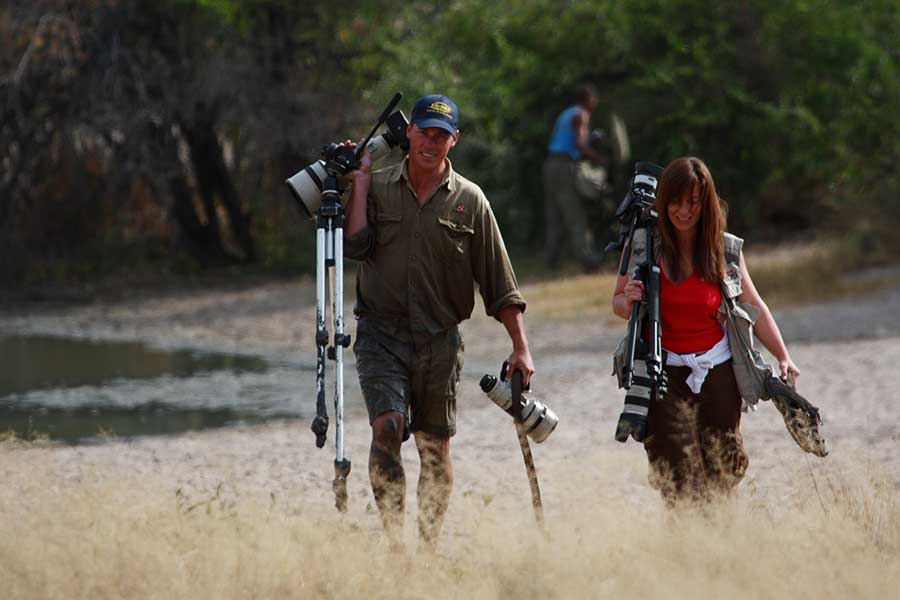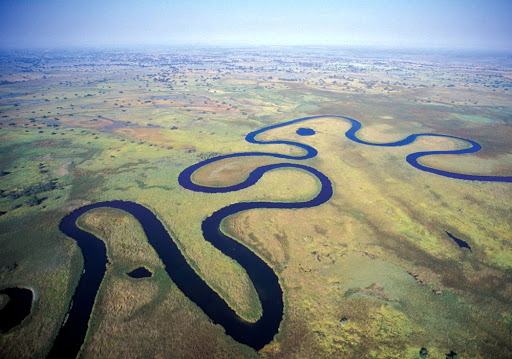Undoubtedly one of Africa’s most beautiful destinations and wildlife wonders Botswana supports a diversity and concentration of wildlife, fauna and flora.
Travel to Botswana
Botswana’s jewel is the Okavango Delta; an oasis of winding channels, open flood plains, lily-pad lagoons, small islands and rich pastures.
Recently declared as a World Heritage Site all of this literally floats on a saturated sea of Kalahari sand with water levels that rise and fall with the season.
We offer packages including any of the following destinations:
Okavango Delta | Moremi Game Reserve | Chobe National Park | Nxai Pan National Park | Makgadikgadi Pans National Park | Central Kalahari Game Reserve | Trans Kalahari Transfrontier Park | Khutse Game Reserve | Linyanti, Selinda & Kwando | Khama Rhino Sanctuary
The best time to travel to Botswana
July to November
Drier months with no rain and the game tends to concentrate around permanent water sources, making for good sighting and photography.
November
The calving season for the plains game and baby antelope abound.
December to April
The wet season, the Central Kalahari and Makgadikgadi Pans fill with water and the game tends to concentrate on these lush plains , with nutritious grasses and the predators follow suite.
April to May
Buffalo and elephant migrate to the the Savute and Chobe Areas, making for magical sightings.
Game densities in the permanently flooded central parts of the Delta are pretty constant throughout the year. As the dry season progresses towards October, the game densities on the edge of this Delta increase as wildlife from drier areas move to this only available water.
Weather patterns and game distribution can be unusual and however much we might try and predict where what will be, it is not always so. A quick summary would be for desert areas- wet season visits and for rivers and delta- the dry season is best.
Popular Botswana Activities
Game flight over the Okavango Delta
Mokoro (dug-out canoe) trips
Boat cruises
Helicopter flights
Eco-quadbiking (Makgadikgadi Pans)
Horse safaris
Elephant back safaris
Our Botswana Highlights
The Okavango Delta and Moremi Game Reserve
There are several names associated with incredible wildlife areas, such as the Serengeti, the Galapagos, and the Great Barrier Reef. The Okavango Delta is one such. One of the largest inland deltas in the world, the Okavango is a birdwatcher’s delight, a fisherman’s challenge, a romantic’s Eden and a favourite Botswana safari destination. Spilling down from the highlands of Angola, the third largest river in southern Africa winds its way south west into Botswana’s dry Ngamiland, where it hits a fault line and sprawls like an outstretched hand into the ancient, bleached sands of the Kalahari. Gradually the waters deposit their silt and thread their way through thick mats of papyrus and sedge, getting ever clearer, ever quieter, feeding huge riverine trees and lush water meadows which support a plethora of creatures.
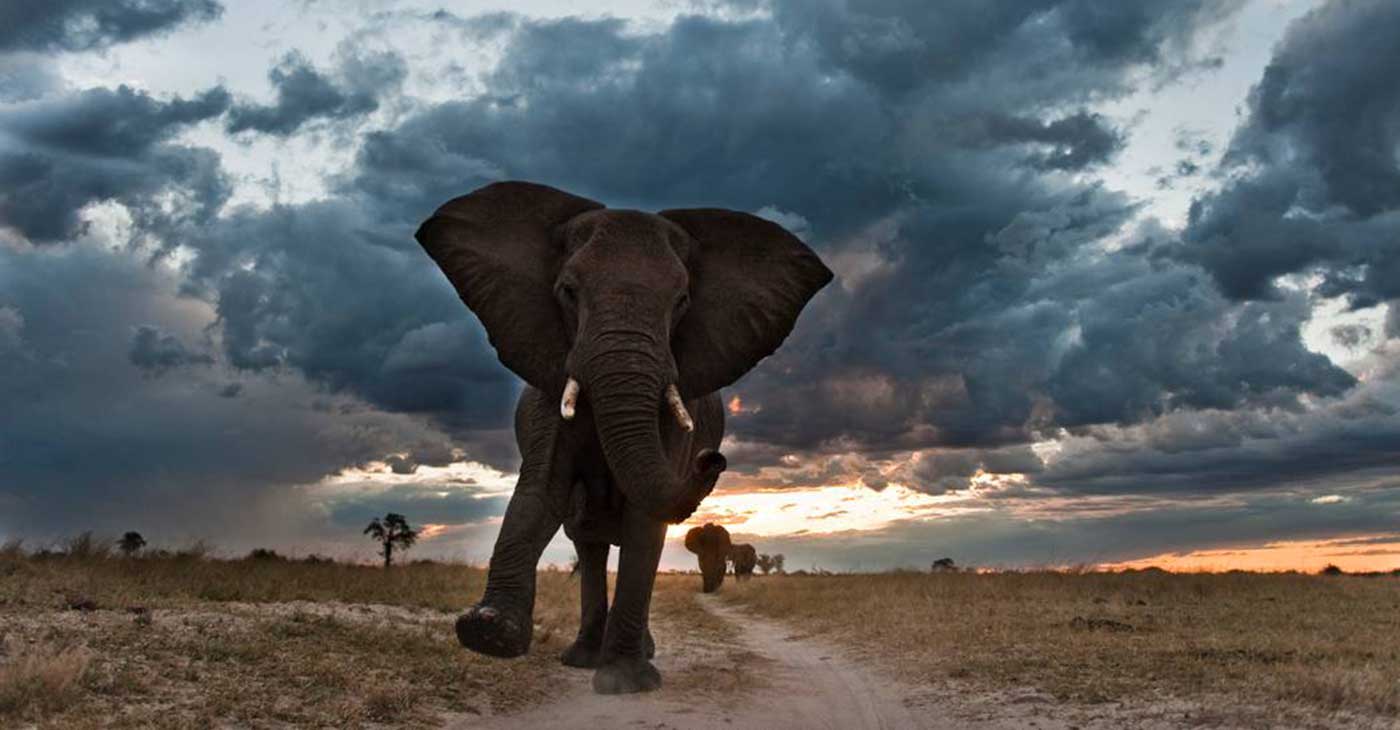
read more
Chobe National Park
Situated in the northernmost corner of Botswana, the Chobe region fills the squat triangle made by the meeting of the Namibian, Zambian and Zimbabwean borders with those of Botswana. The Chobe National Park is at the heart of the complex. A vast reserve of about 12 000 square kilometres, it is for the most part flat and sparsely wooded, but certainly not devoid of interest. Chobe is said to contain the highest concentration of elephants in the world, with an estimated winter population of around 25 000. That’s more than two per square kilometre. A must on any Botswana travel itinerary, this has placed massive pressure on the natural resources of the area, and elephant damage is particularly noticeable in the narrow band of riverine forest along the grass covered flood plains of the Chobe River. There are a number of natural pans in the park, but they are dry for most of the year, and the only surface water during the dry season is provided by the Chobe and Linyanti Rivers in the north and north-west, and by pumped waterholes at Savute, Nogatsaa and Tshinga and Ngwezuma dam. There are a few other pans that hold water for part of the dry season, particularly in the north-east.
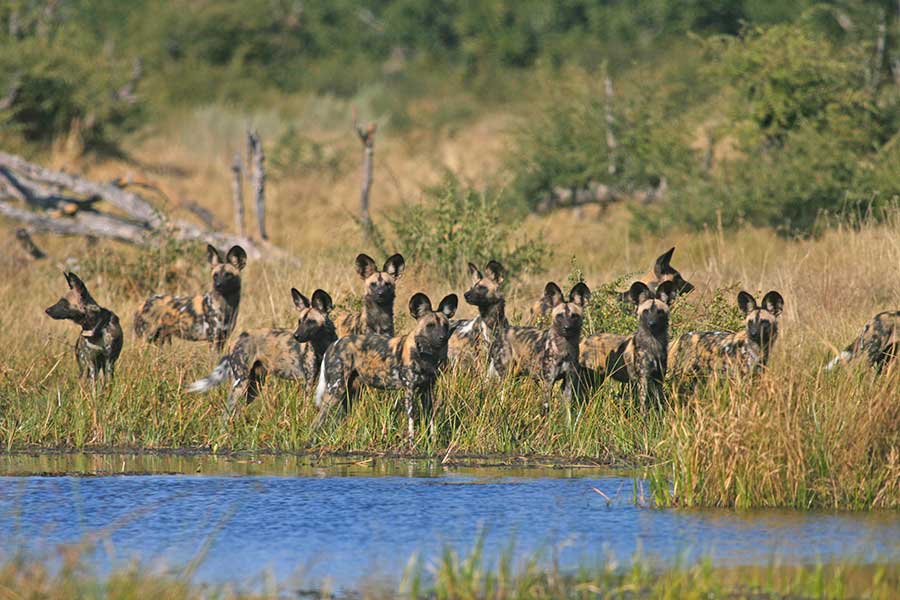
read more
The Savute
The Savute Marsh, fed by the Savute channel, has developed a reputation over the years as one the world’s premier predator viewing areas, boasting one of the highest concentrations of wildlife on the African continent. A number of award winning documentaries have cemented this reputation. Savute is in the western section of the Chobe National Park, situated at the head of the Mababe Depression, once a great lake, and held in the arm of the Magwikhwe Sand Ridge. Wild dog, cheetah and leopard are also often sighted. Key to this area is the unpredictable Savute Channel, which sometimes flows from the Linyanti’s waterways and into the heart of Chobe National Park, flooding the Savute Marsh. Flowing in Livingstone’s time, the channel was dry in 1880, and remained dry for about seventy years. It flooded again in 1957, and the giant skeletons of drowned trees still mark the extent of the deluge. The channel flowed perennially – except for 1966 – until 1981 when it stopped, probably due to tectonic action. Savute Marsh has now been flowing since 2009. It is a spectacular area, with large concentrations of game and predators. The annual zebra migration from Mababe to the south is one of the more dramatic spectacles of this area. Although the lion and hyena and zebra migrations are synonymous with Savute the area also hosts an excellent diversity of other predators and plains game species. Its pans and waterholes in the dry season sustain a large population of bull elephants. Many animals pass through here on their annual migrations & attracted by the marsh’s particularly nutritious grasses.
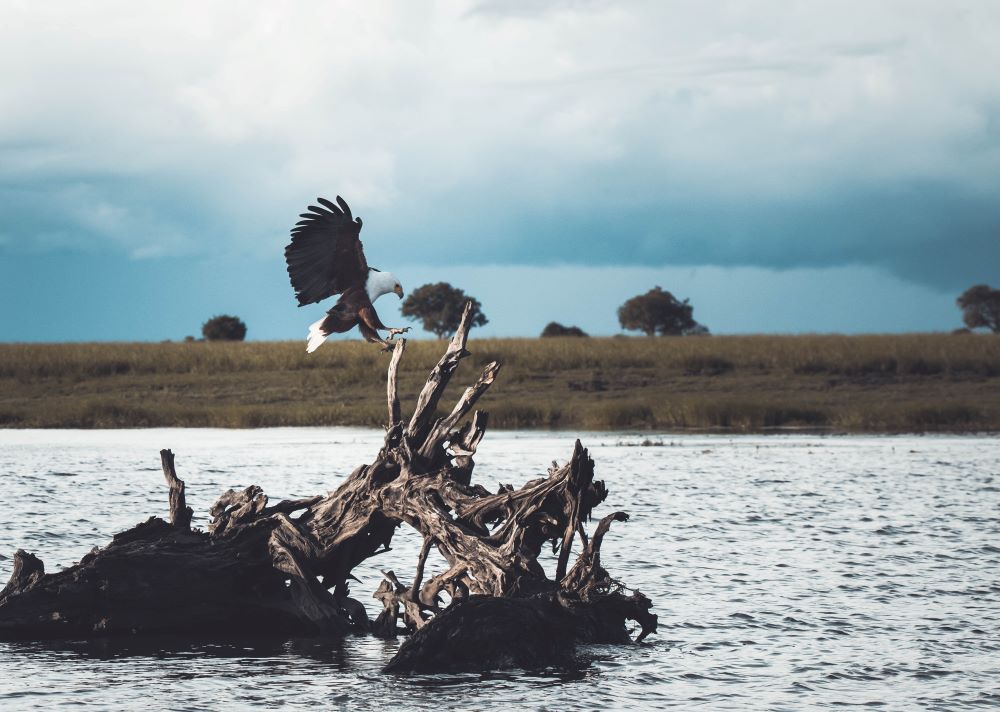
read more
The linyanti
When the Okavango experiences exceptional flooding, the Selinda Spillway feeds water into the Linyanti River, linking the Chobe and the Okavango systems. In this time the flood plains around the Linyanti resemble those of the Okavango, with meandering waterways through papyrus beds and a maze of little islands. Wild date palms and tall riverine trees line the flow, which ultimately links up with the Chobe and then the Zambezi. Wildlife includes crocodile, hippo, and a host of fish species, wild dog, lion, elephant, lechwe, sable, impala and so on. There are over 300 species of birds in the area, including the white pelican, scarlet-chested sunbird and tinkling cisticola. Near the airstrip at Linyanti is the only known colony of carmine bee-eaters nesting on flat land.
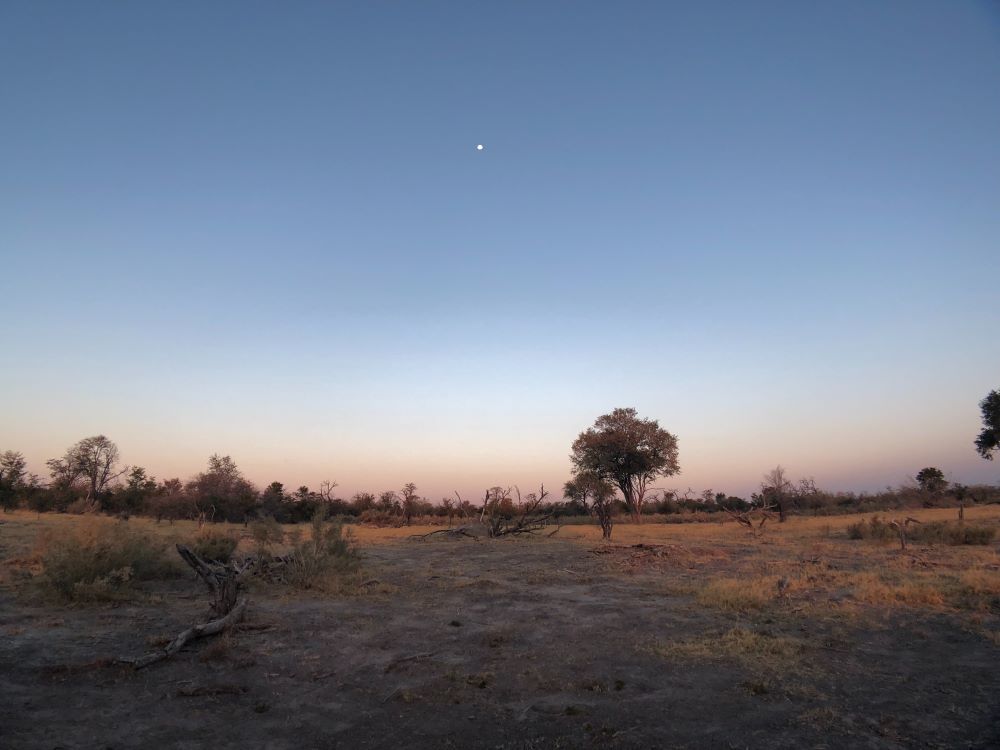
read more
makgadikgadi pans national park
It is said that both “kalahari” and “makgadikgadi” stem from the same ancient San word for thirst-land. Both share waterless flat rolling grasslands and scrub, but the Makgadikgadi, which incidentally has more water in the wet season, has a particularly desert-like ambience.
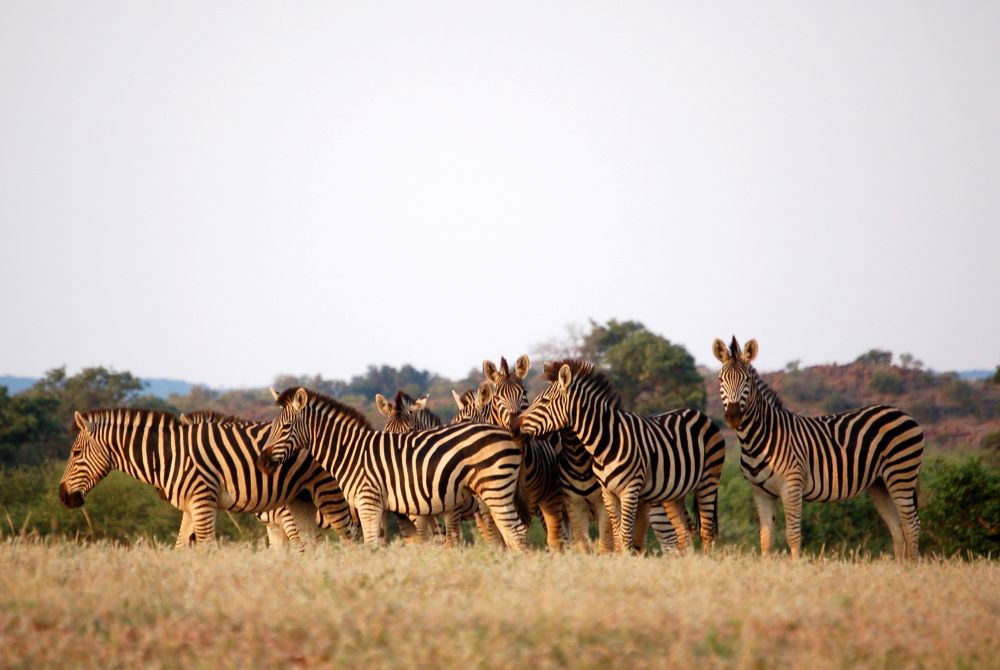
read more
tsodilo hills
Tsodilo Hills, brought to world attention as the “Slippery Hills” in Sir Laurens van der Post’s Lost World of the Kalahari, four small hills of micaceous quartsite schists make up the group. These seem to float above the eternal rolling fossil dunes, and create an impression of profound intensity – a sense that here something of grave importance has, could, did or may happen. This atmosphere has generated a series of indigenous myths and legends that surround these hills, ranging from the site of man’s creation to the dwelling place of a fierce snake-headed monster. Certainly the hills have been – if not venerated themselves – the site of veneration for centuries, and almost every other rock-face is graced with delicate San art, some huge and visible from quite a distance, others that seem to whisper privately to a single observer.
There is a saying: If the African sun shines on you once, it will shine on you again. We invite you to join us and have the African sun shine on you, to make your holiday unforgettable.
